Related Research Articles

Joseph Mallord William Turner, known in his time as William Turner, was an English Romantic painter, printmaker and watercolourist. He is known for his expressive colouring, imaginative landscapes and turbulent, often violent marine paintings. He left behind more than 550 oil paintings, 2,000 watercolours, and 30,000 works on paper. He was championed by the leading English art critic John Ruskin from 1840, and is today regarded as having elevated landscape painting to an eminence rivalling history painting.
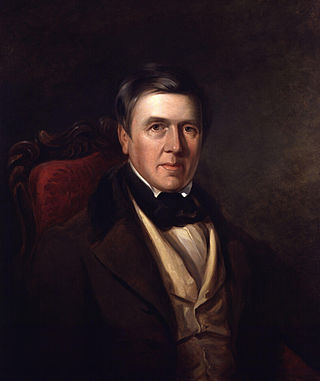
David Cox was an English landscape painter, one of the most important members of the Birmingham School of landscape artists and an early precursor of Impressionism.
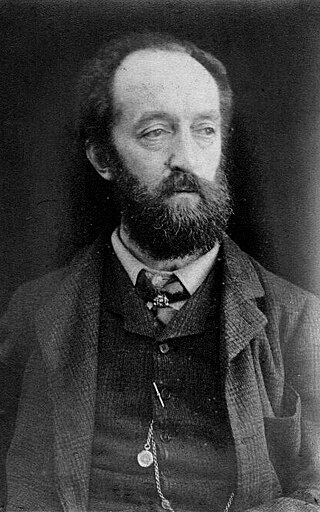
Henry Holiday was a British historical genre and landscape painter, stained-glass designer, illustrator, and sculptor. He is part of the Pre-Raphaelite school of art.

George Richmond was an English painter and portraitist. In his youth he was a member of The Ancients, a group of followers of William Blake. Later in life he established a career as a portrait painter, which included painting the portraits of the British gentry, nobility and royalty.

James Clarke Hook was an English painter and etcher of marine, genre and historical scenes, and landscapes.
William Lionel Clause was an English artist.

George Goodwin Kilburne, R.I., R.O.I, R.M.S, was an English genre painter specialising in accurately drawn interiors with figures. He favoured the watercolour medium, although he also worked in oils, pencil and initially trained as a wood-engraver.
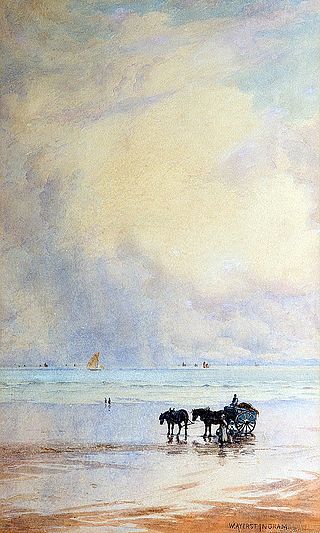
William Ayerst Ingram or W. Ayerst Ingram RBA was a painter and member of the Newlyn School. He did notable Landscape art and Marine art. In 1906 he joined the Royal Institute of Oil Painters and in 1907 he joined the Royal Institute of Painters in Water Colours.

William Marlow was an English landscape and marine painter and etcher.

John Fulleylove was an English landscape artist and illustrator.
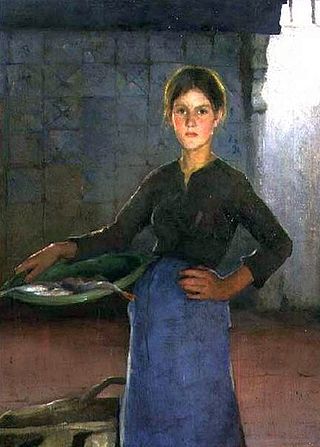
Elizabeth Adela Forbes was a Canadian painter who was primarily active in the UK. She often featured children in her paintings and School Is Out is one of her most popular works. She was friends with the artists James Abbott McNeill Whistler and Walter Sickert, both of whom influenced her work. Her etchings in particular are said to show the influence of Whistler.
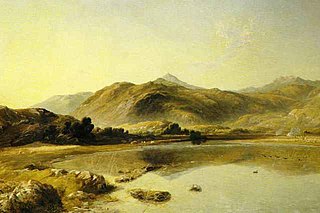
Thomas Danby was a British landscape painter.

Charles Vacher (1818–1883) was a British painter in watercolours.

Giles Firmin Phillips (1780–1867) was an English artist and author. He painted landscapes and river scenes, primarily of the river Thames. His paintings were exhibited, among other venues, at the Royal Academy from 1836 - 1858. He is the author of several books on painting and lithography.

William Henry Fisk (1827–1884), was an English painter of landscapes and historical subjects, and a drawing-master.

William Logsdail was a prolific English landscape, portrait, and genre painter. He exhibited at the Royal Academy, the Royal Society of British Artists, the Grosvenor Gallery, the New Gallery (London), and others. He is notable for his realistic London and Venice scenes and his plein air style.

Gaetano Giuseppe Faostino Meo was an Italian-British artist's model, landscape painter, and a noted craftsman in mosaic and stained glass. His unpublished autobiography is a useful source for art historians of the Aesthetic Movement and Edwardian Era.

Andrew Brown Donaldson was a British artist mainly active in the second half of the nineteenth century. He was born in 1840, although some sources say 1838, and was the second son of a solicitor named William Leverton Donaldson and his wife, Margaret Tennent. As their name implies, the Donaldsons were of Scottish descent and they were perhaps best known in the nineteenth century for their prominence in the field of architecture; William Leverton Donaldson's father, James Donaldson (1756-1844), and elder brother, Thomas Leverton Donaldson (1795-1885), were both renowned architects. Margaret Tennent was the daughter of John Tennent of Glasgow and his wife, Margaret Brown, daughter of Andrew Brown, after whom Andrew Brown Donaldson was evidently named. Inexplicably, Andrew Brown Donaldson is commonly referred to in the art world as Andrew Benjamin Donaldson.

Arthur James Stark was an English painter and a member of the Norwich School of painters.
William Riviere (1806–1876) sometimes Rivière, was an English painter and art educator.
References
- Attribution
![]() This article incorporates text from a publication now in the public domain : "Symons, William Christian". Dictionary of National Biography (2nd supplement). London: Smith, Elder & Co. 1912.
This article incorporates text from a publication now in the public domain : "Symons, William Christian". Dictionary of National Biography (2nd supplement). London: Smith, Elder & Co. 1912.